Related Research Articles

Hamad bin Isa bin Salman Al Khalifa is King of Bahrain since 14 February 2002, after ruling as Emir of Bahrain from 6 March 1999. He is the son of Isa bin Salman Al Khalifa, the previous and first emir. The country has been ruled by the Al Khalifa dynasty since 1783.

Khalifa bin Salman Al Khalifa was a Bahraini royal and politician who served as the Prime Minister of Bahrain from 10 January 1970 until his death in 2020. He took office over a year before Bahrain's independence on 15 August 1971. He was the longest-serving prime minister in the world. Under the 2002 Constitution he lost some of his powers, with the King now having the authority to appoint and dismiss ministers.

Swine influenza is an infection caused by any of several types of swine influenza viruses. Swine influenza virus (SIV) or swine-origin influenza virus (S-OIV) refers to any strain of the influenza family of viruses that is endemic in pigs. As of 2009, identified SIV strains include influenza C and the subtypes of influenza A known as H1N1, H1N2, H2N1, H3N1, H3N2, and H2N3.

Salman bin Hamad bin Isa Al Khalifa is Crown Prince and Prime Minister of Bahrain. He is also the deputy supreme commander of the Bahrain Defence Force.

Influenza A virus subtype H1N1 (A/H1N1) is a subtype of influenza A virus (IAV). Some human-adapted strains of H1N1 are endemic in humans and are one cause of seasonal influenza (flu). Other strains of H1N1 are endemic in pigs and in birds. Subtypes of IAV are defined by the combination of the antigenic H and N proteins in the viral envelope; for example, "H1N1" designates an IAV subtype that has a type-1 hemagglutinin (H) protein and a type-1 neuraminidase (N) protein.

The 2009 swine flu pandemic, caused by the H1N1/swine flu/influenza virus and declared by the World Health Organization (WHO) from June 2009 to August 2010, was the third recent flu pandemic involving the H1N1 virus. The first identified human case was in La Gloria, Mexico, a rural town in Veracruz. The virus appeared to be a new strain of H1N1 that resulted from a previous triple reassortment of bird, swine, and human flu viruses which further combined with a Eurasian pig flu virus, leading to the term "swine flu".
The 2009 flu pandemic in the United States was caused by a novel strain of the Influenza A/H1N1 virus, commonly referred to as "swine flu", that was first detected on 15 April 2009. While the 2009 H1N1 virus strain was commonly referred to as "swine flu", there is no evidence that it is endemic to pigs or of transmission from pigs to people; instead, the virus spreads from person to person. On April 25, the World Health Organization declared a public health emergency, followed concurringly by the Obama administration on April 26.

The 2009 swine flu pandemic in Canada was part of an epidemic in 2009 of a new strain of influenza A virus subtype H1N1 causing what has been commonly called swine flu. In Canada, roughly 10% of the populace has been infected with the virus, with 428 confirmed deaths ; non-fatal individual cases are for the most part no longer being recorded. About 40% of Canadians have been immunized against H1N1 since a national vaccination campaign began in October 2009, with Canada among the countries in the world leading in the percentage of the population that has been vaccinated. The widespread effect of H1N1 in Canada raised concerns during the months leading to the XXI Olympic Winter Games, which took place in Vancouver in February 2010.
In March and April 2009, an outbreak of a new strain of influenza commonly referred to as "swine flu" infected many people in Mexico and other parts of the world, causing illness ranging from mild to severe. Initial reports suggested that the outbreak had started in February due to farming practices at a pig farm half-owned by Smithfield Foods. Smithfield Foods stated that it had found no clinical signs or symptoms of the presence of swine influenza in the company's swine herd, or among its employees at its joint ventures in Mexico, that it routinely administers influenza virus vaccination to their swine herds and that it conducts monthly testing for the presence of swine influenza. The new strain was identified as a combination of several different strains of Influenzavirus A, subtype H1N1, including separate strains of this subtype circulating in humans and in pigs.
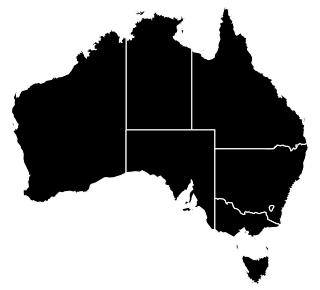
Australia had 37,537 confirmed cases of H1N1 Influenza 2009 and 191 deaths reported by Department of Health but only 77 deaths reported by the Australian Bureau of Statistics. The actual numbers are much larger, as only serious cases warranted being tested and treated at the time. Suspected cases have not been reported by the Department of Health and Ageing since 18 May 2009 because they were changing too quickly to report. Sources say that as many as 1600 Australians may have actually died as a result of this virus. On 23rd of May 2009 the federal government classified the outbreak as CONTAIN phase except in Victoria where it was escalated to the SUSTAIN phase on 3rd of June 2009. This gave government authorities permission to close schools in order to slow the spread of the disease. On 17 June 2009 the Department of Health and Ageing introduced a new phase called PROTECT. This modified the response to focus on people with high risk of complications from the disease. Testing at airports was discontinued. The national stockpile of antiviral drugs were no longer made available to people with the flu unless there were more than mild symptoms or a high risk of dying.
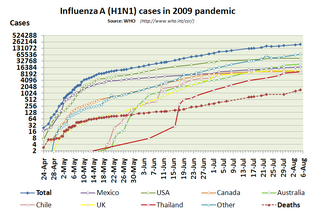
This article deals with the status and efforts regarding the 2009 swine flu pandemic by country and continent/region.
In reaction to the 2009 flu pandemic, governments around the world had responded with countermeasures, some with extreme actions against pigs, which included the official extermination of all domestic pigs in Egypt and the culling of three wild boars at the Baghdad Zoo in Iraq. Many of these slaughters occurred in Muslim countries, and religious restrictions on the consumption of pork have been cited as influencing the decision to take such action. Many other countries had also banned international trade in pigs and pork products.

The pandemic H1N1/09 virus is a swine origin influenza A virus subtype H1N1 strain that was responsible for the 2009 swine flu pandemic. This strain is often called swine flu by the public media due to the prevailing belief that it originated in pigs. The virus is believed to have originated around September 2008 in central Mexico.
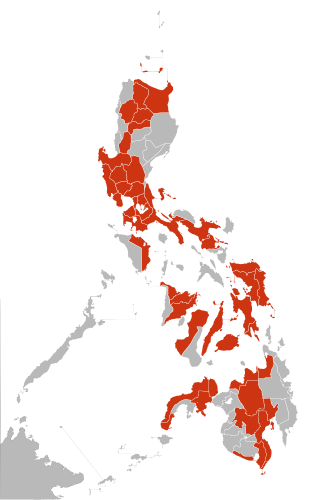
The 2009 swine flu pandemic was confirmed to have spread to the Philippines on May 21, 2009. In the following days, several local cases were reported to be caused by contact with two infected Taiwanese women who attended a wedding ceremony in Zambales.

The 2009 flu pandemic in Asia, part of an epidemic in 2009 of a new strain of influenza A virus subtype H1N1 causing what has been commonly called swine flu, afflicted at least 394,133 people in Asia with 2,137 confirmed deaths: there were 1,035 deaths confirmed in India, 737 deaths in China, 415 deaths in Turkey, 192 deaths in Thailand, and 170 deaths in South Korea. Among the Asian countries, South Korea had the most confirmed cases, followed by China, Hong Kong, and Thailand.

The 2009 swine flu pandemic in North America, part of a pandemic in 2009 of a new strain of influenza A virus subtype H1N1 causing what has been commonly called swine flu, began in the United States or Mexico.
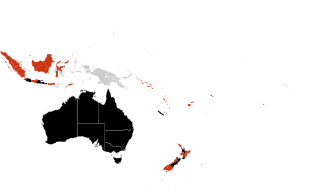
The 2009 flu pandemic in Oceania, part of an epidemic in 2009 of a new strain of influenza A virus subtype H1N1 causing what has been commonly called swine flu, has afflicted at over 22,000 people in Oceania, with 56 confirmed deaths. Almost all of the cases in Oceania have been in Australia, where the majority of cases have resulted from internal community spread of the virus. In addition, the government of New Zealand, where most of the remainder of cases in Oceania have occurred, is on high alert for any people travelling into the country with flu-like symptoms.
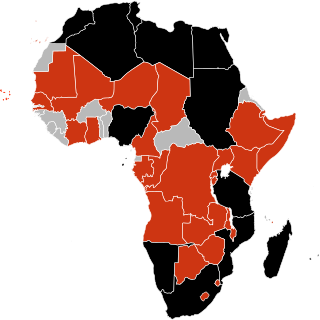
The 2009 flu pandemic hit Africa two months later than other continents with the first case reported in Egypt on June 2, 2009. As of December 1, 30 countries in Africa had reported cases and 7 countries in Africa had reported a total of 108 deaths. It was the least affected continent.
The 2009 swine flu pandemic in Malaysia was part of a global outbreak caused by a new strain of the influenza A virus subtype H1N1 (A/H1N1). The first confirmed case in Malaysia was reported on 15 May 2009, involving an imported case from the United States. Subsequent imported cases from countries such as Australia were detected, with the first case of local transmission identified on 17 June 2009.

The 2015 Indian swine flu outbreak refers to an outbreak of the H1N1 virus in India, during early 2015. The states of Gujarat and Rajasthan were the worst affected.
References
- ↑ "PRECAUTIONARY MEASURES AGAINST SWINE FLU TAKEN". Bahrain News Agency . 27 April 2009. Retrieved 18 November 2012.
- King Hamad drops four ministers Archived 2014-07-24 at the Wayback Machine